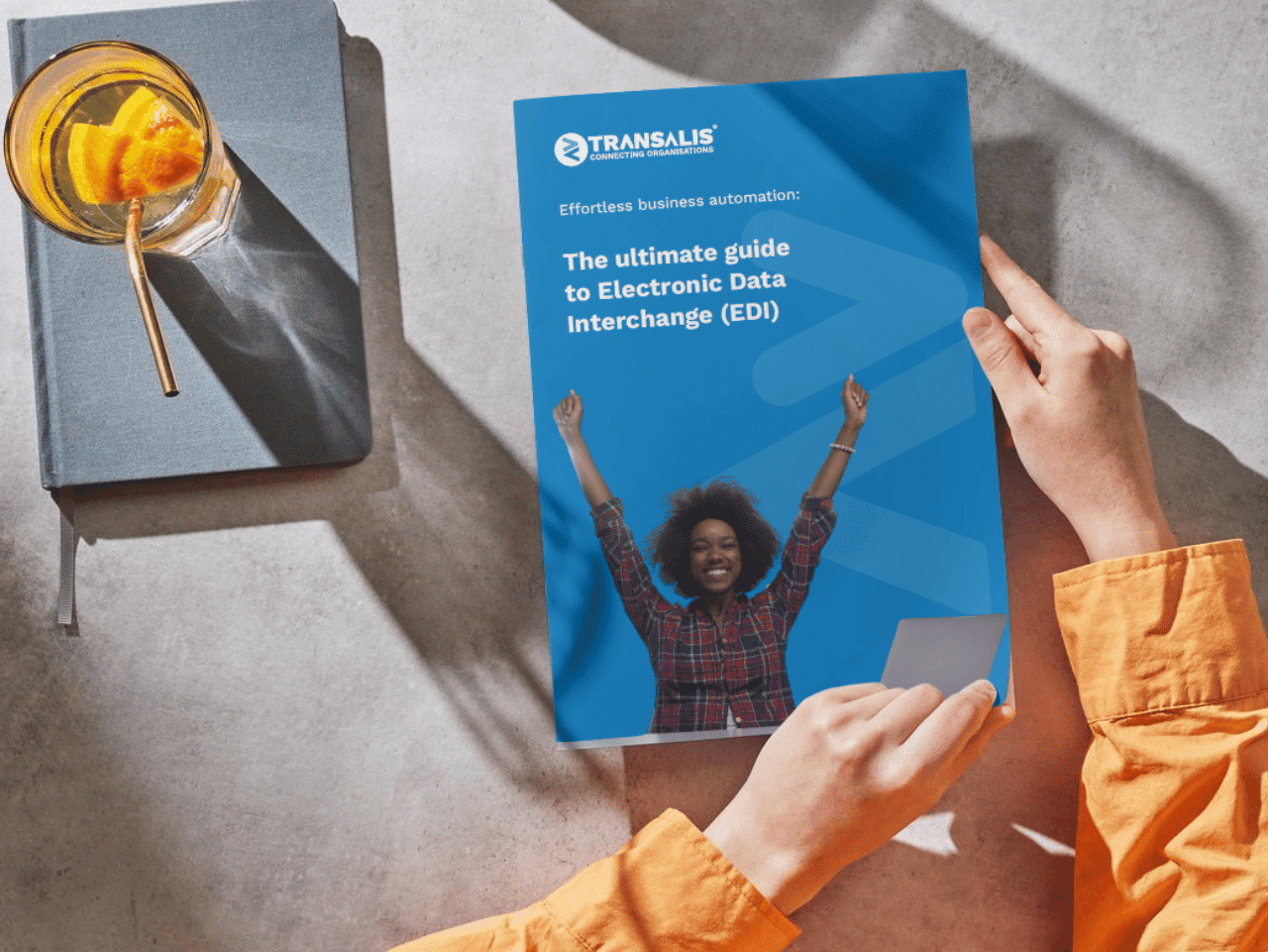Understanding how EDI works (Electronic Data Interchange) is key to choosing the right system for your business. Whether you’re just starting or need a more holistic solution.
As your business scales, digital transformation and automation of processes is key to success.
This is especially true for businesses supplying large retailers that regularly require EDI connectivity. It’s therefore crucial to understand the EDI options available to you.
That’s why Transalis has put together “The Ultimate Guide to EDI”. This in-depth guide cuts through the jargon, breaks down the technical concepts, and offers clear descriptions of the different EDI setups available. We provide this essential guidance so that you can make the right decision for your business needs.
Here’s what you’ll find inside:
- EDI Basics: We kick things off with the essentials—what EDI is, how EDI works, and why EDI is central to many business transactions.
- Comparing EDI Solutions: Then, we explore the different EDI solutions available to help you pinpoint the perfect fit for your business goals.
- The EDI Journey: Lastly, we walk you through the implementation and onboarding process, ensuring a smooth transition – no matter what system you choose.
What do we need from you and why?
-
Why supplier code and GLN are mandatory and how we use these in EDI:
Supplier code is normally mandatory by Trading Partner and so we need to store this information in our system to send it across in EDI files; GLN is used to route information automatically and ensure transactions are carried out between correct parties(GLN is critical for us, we cannot do EDI setup without a GLN), -
What are the different types of connectivity:
AS2, VAN, SFTP and FTP are standard, with OFTP2(largely used by automotive companies) and X400 normally being more complex as they require more details. These interfere in project duration – as it is the first step in development phase, delay in connecting to a Trading Partner and receiving the first test Order will impact overall project duration. - EDI messages format:
There are different types of format but the most used are EDIFACT, TRADACOMS and UBL XML; these are essentially the template of the EDI messages and it is important to understand the format required by supplier ands trading partner, so mappings are correctly implemented and file transformation is setup, if applicable.
Let’s get to it! Get your copy by clicking the download link. We’re also on hand if you have any more questions…

Get your free copy of the ultimate guide to understanding EDI!
We’ve pulled together everything you need to know about how EDI works. This free guide walks you through all the basics, answers the top FAQs, and helps you identify the right EDI solution for your business.
To discuss your business automation needs, schedule an intro meeting with one of our friendly team. Call us directly on 0845 123 3746 (UK callers) or +44 1978 369 343 (international callers), or email sales@transalis.com. You can also learn how EDI works by getting a free demo account of eDI Instant. Take a look at our Knowledge Hub for even more useful insights, guidance and examples.

